20 Super Easy Ways to Be Prepared for a Tropical Storm
Looking for ways to be prepared for a tropical storm? Back in 2005, Hurricane Katrina took an estimated 1,800 lives, most of whom were not prepared or failed to listen to authorities. This should cause great concern to some of you, especially for those of my readers who live in an area where hurricanes are known to happen more frequently. Is your family prepared for a storm like Katrina?
To help keep you and your family safe, I’ve taken the time to mention ways that you can prepare ahead of time, but also what you should do during and after a hurricane. My hope is that you take what I have to say very seriously because your family’s lives could very well one day depend on this kind of information and how well it is implemented in your preparedness plan. Keep reading on how you can be better prepared for a tropical storm. In case you missed this post, Hurricane Katrina And How One Family Survived
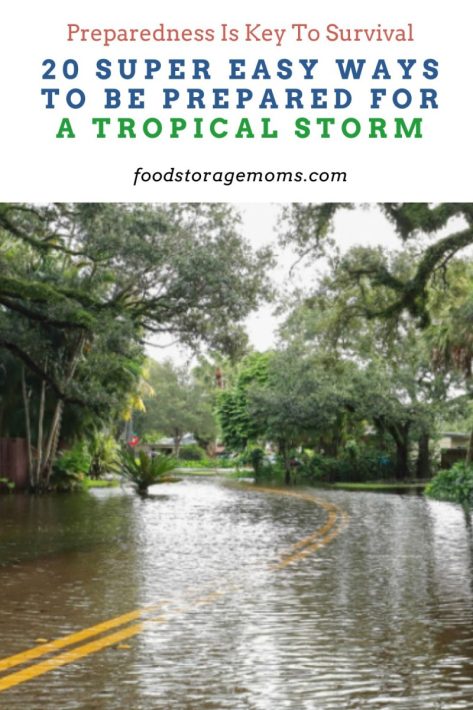
20 Super Easy Ways to Be Prepared for a Tropical Storm
Ways to Prepare Ahead of Time
There are a number of ways that you can be preparing your home now for a potential tropical storm that could eventually head your way. For starters, be sure to invest in flood insurance so that your home and valuables aren’t a total loss. If you already have flood insurance, be sure to get familiar with your policy and make sure it is updated from time to time to account for value increases.
Should your region be directly in the projected path of a tropical storm, there are several precautions that you can take for your home and your family before one arrives. Here are a few tips that the Federal Emergency Management Agency strongly encourages:
1. If you and your family aren’t directed to evacuate, you still want to stock up on enough food, water, medicine, and other supplies to last you a minimum of three days, just in case.
2. Get familiar with more than one evacuation route in case your first option is blocked by traffic and you’ve been told by authorities to evacuate.
3. Be sure to obey evacuation orders if they are given.
4. Make sure that you fill up your gas tank ahead of time. I’ve told my readers for years to always have at least half a tank full at all times.
5. Trim away any branches or trees that could possibly cause damage to your home.
6. Repair your roof of any damaged tiles or shingles so that you’re not dealing with leakage in your attic or your ceilings after the storm hits.
7. Charge all of your electronics that you might need beforehand. Also, consider ways to charge them up in case you lose power. I like having solar panels.
8. Place all of your important documents and valuables in a waterproof safe. The higher from ground level the better.
9. Bring all lightweight objects inside that are around your home. That could include patio chairs, pool toys, BBQ covers, etc. Heavy items should be tied down.
10. Turn your refrigerator to the coldest setting. This will keep everything colder longer if your power goes out.
11. Cover your windows with storm shutters or plywood boards if you don’t have any sturdy coverings.
12. Lay sandbags around all of your entryways to reduce the risk of water damage. (There are several insurance companies that will cover up to $1,000 in avoidance measures for those who protect their homes in this way.)
13. Have a plan and keep the telephone numbers of friends and family with you nearby. That way you can reach out to them to make them aware of your situation afterward. Just keep in mind that texting may be the only way to get ahold of them because many lines will be in use in your area following a major disaster.
14. For your own safety, never attempt to walk, swim, or drive through flood waters unless you’re left with no other choice. Just 6 inches of moving water can knock a person off of their feet and even move vehicles as well.
What You Need to Do During a Tropical Storm
Even if the waters appear to be safe, you may not realize that they may be contaminated or have an electric charge to them due to a downed powerline or electronics that are beneath the water. Besides being electrocuted, snakes would be another danger to watch out for. Stay away from windows. Find a safe interior room of your house to ride out the storm. This could be a large closet or a downstairs bathroom. If you have no other choice but to be near a window, be sure to cover it with something sturdy like plywood or a mattress.
Never go outside and leave the safety of your home. At least not until the authorities have given you the green light.
What to Do and Not Do Immediately After a Tropical Storm
It can be devastating to have to pick up the pieces and move on after a tropical storm has taken place. But before you start the cleaning process, make sure that you continue to listen to authorities for any further instructions that they may have. FEMA also has a few guidelines that I’ve noted below that you need to be aware of:
15. Keep off the roads unless it’s an emergency directive to leave your home, and make sure local routes are deemed safe.
16. Do not attempt to drive through flood waters. This can ruin your engine and you could even get trapped in the water or swept away if the waters rise high enough.
`17. Electrocution is a real concern when you’re dealing with flooding. Never attempt to touch electrical equipment and appliances if they appear wet or you’re standing in water inside or outside your home.
18. Use heavy-duty boots and gloves to protect yourself during the cleaning process.
19. Should your home be without power and you plan on using a generator, make sure that you keep it outside and never bring it into your house. Generators and other gas-powered machinery should always remain outdoors and away from windows. This will mean having heavy-duty extension cords that are designed for this purpose.
20. For those of you who may deal with water damage afterward, there’s a very good chance that mold will also start to grow. Be sure to catch up on reading the EPA guidelines so that you’re protecting yourself as you clean your home.
What are the 4 types of tropical storms?
Tropical storms are generally categorized as hurricanes, tropical depressions, tropical cyclones, and tropical disturbances. These categories are based primarily on the wind speeds and amount of rain anticipated or actually being experienced. Do your research and learn the differences and the amount of preparation that should go into your plans based on what is typical for your location. I’d always prepare for the worst-case scenario, just in case.
What months of the year are typical for tropical storms and hurricane seasons?
The National Oceanic and Atmospheric Administration (NOAA), a division of the National Weather Service, is predicting a very active Atlantic hurricane season this year. They are predicting a 65% chance that we’ll experience an above average number during the 2022 season that runds from June 1 to November 30. If accurate, that would mean seven straight years of above active activity. With the changes in climate patterns over the past few years, this trend has a good chance to continue.
Although we do experience some hurricane activity on the West Coast Pacific Ocean area, it never reaches the level of Atlantic Ocean East Coast storms.
What is the difference between a hurricane watch and a hurricane warning?
A hurricane watch is when hurricane activity is predicted based on activity levels out in the ocean. A hurrican warning is when they are emenient and are communicated so the population can take action. Surface winds are expected to be 74 mph or above.
What is the difference between a tropical storm watch and a tropical storm warning?
The definitions a pretty much the same as mentioned above for hurricanes, just not as strong a storm. Surface winds are anticipated to be between 39-73 mph.
Due to forecasters predicting different hurricane intensity, what is considered a major hurricane?
There is a scale used to categorize hurricanes. It is called the Saffir-Simpson Wind Scale and it runs from 1-5. We know that all hurricanes can cause property damage, but a major hurrican is one that is ranked 3 or above. Listed below are brief discussions of the categories for your review:
- Category 1 is described as a storm with very dangerous winds that will produce some property damage. Those winds range from 74 to 95 mph.
- Category 2 storms have winds from 96 to 110 mph and have extremely dangerous winds that will cause extensive damage.
- Category 3 anticipates devastating damage from the winds that are 111 to 129 mph.
- Category 4 storms generate catastrophic damage with the winds running 130 to 156 mph.
- Category 5 is the most powerful with winds running 157 mph and above. The catastrophic damage will be extremely extensive with a high percentage of homes being destroyed. Fallen trees and power poles with isolate residential areas and prompt power outages for weeks or months. It will also cause those areas to be uninhabitable for long periods.
What is a storm surge?
This is a term used to estimate the level of the ocean at the height of the storm vs what it normally is without the storm. A storm surge can cause considerable damage to propery close to the seashore as the higher wave passes onto the land and then retreats. A storm surge is accoumpanied by the high winds, often making for a devastating combination.
What is a tropical wave?
This term has more to do with the atmosphere around the storm than the actual ocean waves that may be caused. It is a low pressure trough the runs north to south as the winds move from east to west towards a U.S. landfall.
What are some hurricane preparedness activities I should consider for children?
The key to helping prepare your children for an eminent hurricane, communications is critical. You need to help keep them calm, while also alerting them of the need to follow instructions. Here are some suggested ideas to make the preparations effective:
- Keep an eye on your children and look for any changes in eating habits, sleeping patterns, and general behavior before, during, and after the storm.
- Talk with your children and let them know what you are expecting to happen. As things evolve, keep them informed so they feel part of the family and how your are reacting to the events unfolding.
- Be a role model to the younger family members and show them you are in control and know how to deal with events as the storm progresses.
- Have the kids help put together a “bug out” or “to go” bag. Explain why you’re including what you are and how the supplies will be used if you have to leave our home.
- Since they are putting together one of those bags, you also need to discuss evacuations, where to go, and what routes and location options your family has.
- Be prepared to evacuate, and practice the steps necessary. Be sure to follow the directives of local authorities.
- If the kids are in school, be sure to get acquainted with their normal storm response activities and include the kids with info about what to expect.
- Try to keep as many normal daily activities and routines as possible. Kids like consistency.
- Don’t have the kids listen and read all the junk in social media as events unfold. Be willing to filter whan may scare them.
- If you don’t have to evacuated, make sure the kids know they’ll be safe at home. Involve them in the plans for the day and how to stay busy doing things they are used to and enjoy, if possible.
What is the difference between tornadoes and typhoons?
The biggest difference between tornadoes and typhoons are the way in which they are formed, their size, and the length of the storms. Tornadoes form over land whereas typhoons are formed over water. Tornadoes are generally a few hundred feet across and last just a few minutes or up to about a half hour. Typhoons last much longer, anywhere from a few hours up to a month. Tornadoes are generally a few hundred feet across compared to typhoons which usually stretch over a few hundred miles. Both are very powerful storms and can cause a great amount of damage.
What are some examples of the type of damage that a tropical storm can create?
Don’t be surprised if your home gets flooded, windows get blown out, roof and siding are damaged or torn off, trees and shrubs are torn down with possible property damage, etc.
What would be good to have in an emergency kit for someone with special needs?
I highly recommend reading my post about the special considerations for the elderly or incapacitated. Their safety, just like for the kids discussed above, is your first priority. If theere is any hint of a possible need for evacuation, get on that bandwagon early since you have some special issues to deal with. One critical thing some people don’t think of is medicines and how to store and protect them.
How can I be prepared for tropical storm conditions if I have pets?
I highly recommend checking out my post What to do With Your Pets in an Emergency. This will give you a lot of information regarding ways to prepare for an emergency if you and your family own pets.
A Few of My Favorite Items for Survival
- Butane Stove with Fuel
- Gasoline Stabilizer
Final Word
For those of you that live in a part of the country that has tropical storms every so often, I hope that you found these tips beneficial to you. Stay safe out there and never neglect to listen to the authorities when it comes to your family’s safety. They know what’s best for you in these types of situations. Are there any other valuable tips that people need to know about when it comes to being prepared for a tropical storm? I’d love to hear from you! ay God Bless this world, Linda
Copyright Images: Fort Lauderdale Tropical Storm AdobeStock_391669153 by Jillian Cain

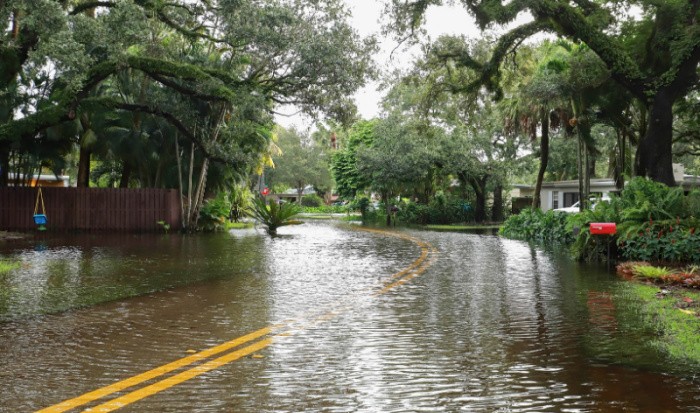

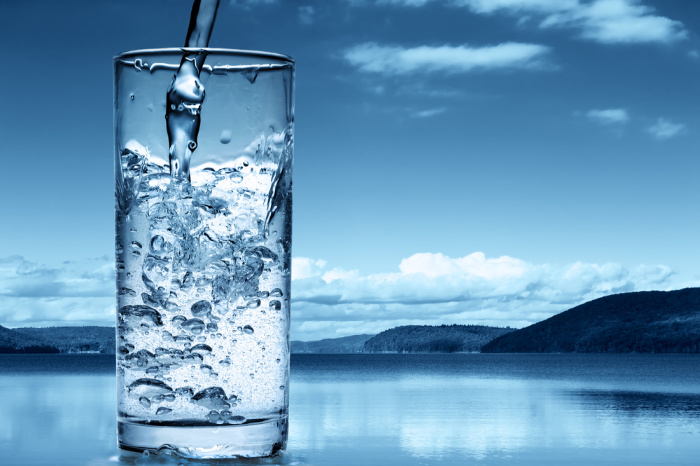
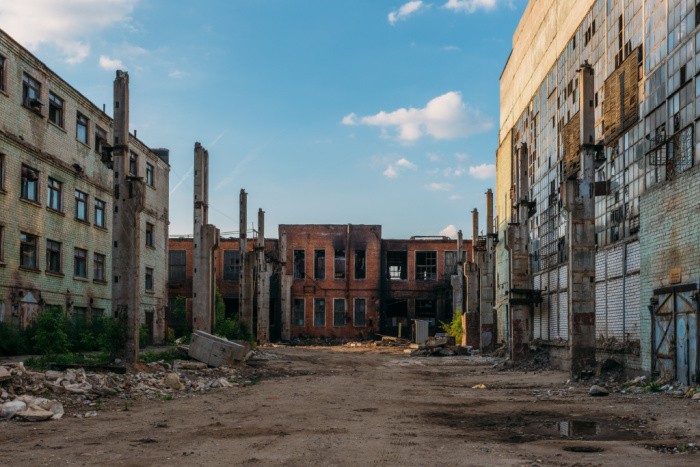
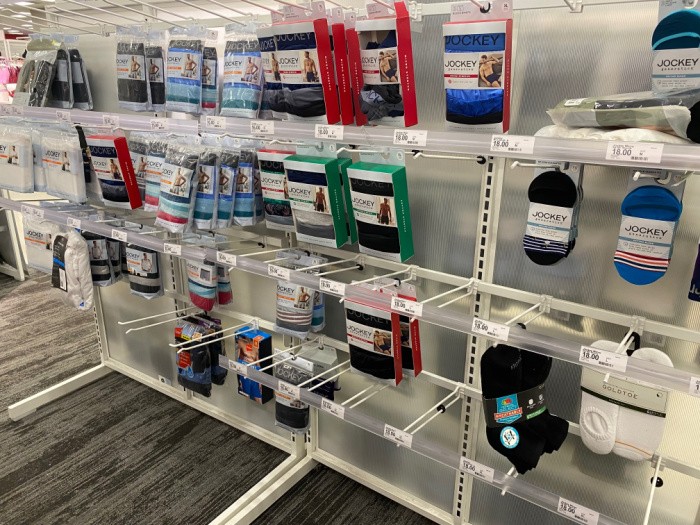

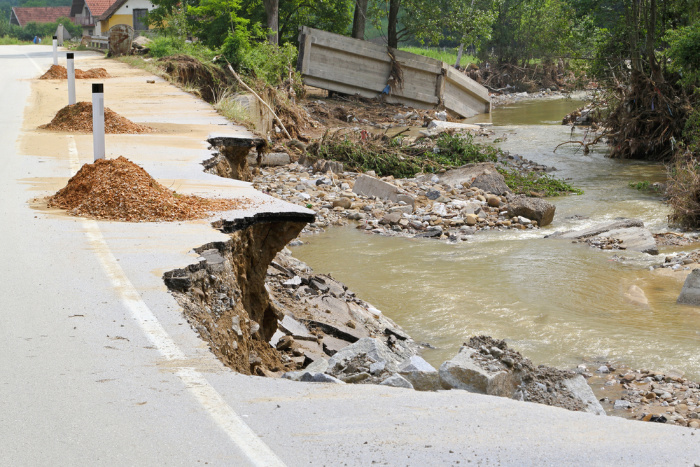
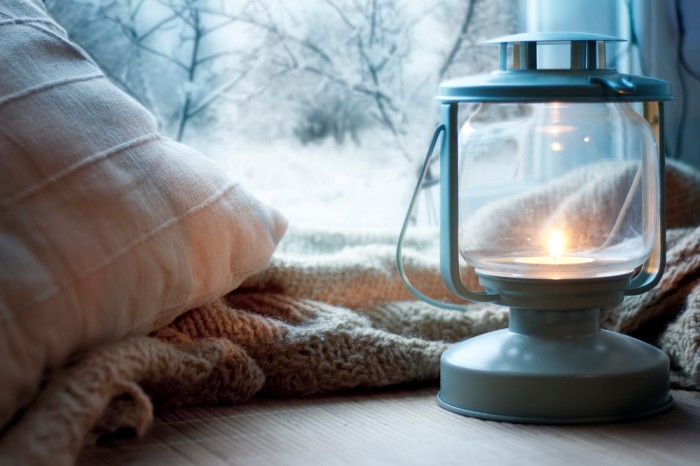













Help from the government like the National Guard should be welcomed but NOT part of your plan and definitely NOT the entire plan.
EVERYTHING you get from fema will want reimbursement.
HI Matt, wow, I didn’t know that about FEMA!!! This is exactly why we need to take care of ourselves and have a plan BEFORE we need our supplies. I totally agree about welcoming the National Guard but do not depend on them or expect them to come and get you. If you haven’t read “5 Days at Memorial” you need to, it’s about the aftermath of Hurricane Katrina. It’s a true story. Linda
My dad always taught us that it is the same to keep the top half of our gas tank full as to keep the bottom half full.
Hi Rosann, I like that, it’s true for all of us, thank you for sharing! Linda
Those who are not in immediate path of Hurricanes and tropical events still need to watch events unfolding- speeds of the storm,projected paths and intensity. After they make landfall, the storm path projections for large areas disappear.It helps to be able to anticipate the amount of rain one will receive, and damage to expect.
We are more than 350 miles from the Gulf coast. storms that come in can give us intense flooding in our area. low lying areas to our west often flood, those in homes have large losses and emergency evacuations. Several years ago there was an intense hurricane that was a slow mover. It produced tornadoes in our area with extensive damage,Flooding to our east and south was severe. we received 9 inches of rain in less than 24 hours. We/Property were both ok, on returning home in aftermath- had to change routes because of closed roads.One of cities we meant to stop to eat (long trip)-everything was CLOSED…. No power, extensive flooding of businesses.This was the same storm that Flooded Nashville Tn- and the Grand Ole’ Opry.
Being prepared by clearing/(cleaning access to storm grates in cities) drainage culverts and removing debris that can be easily washed in to impede flow.
Doing all the tie down and secure of all your outside areas.. If you are in an area that MAY flood .. take a hammer, crow bar and heavy sledge to the attic, if you have access… in case of inability to evacuate in quick flood event the rooftop may be the best place to ride it out.. and one would need a place/way to make an outlet. Water proof bags for your electronics ( phone.)
if you have fur babies, leash and carrier. should be big enough for their needs.. labeled with their name, and have extra feed/water/leash/harness/Muzzle( a frightened-injured dog will bite!) and a copy of their vet vax.’s( rabies!) taped to the crate…. with it- even if you do not normally keep them in one… they need to be able to fit it comfortably and know they are safe within the crate..
..yes they need a bug out bag…if special diet required 2-4 weeks of shelf stable food. (your standard for their care may not be available).pee pads, meds..flea and tick control.
If you are in a mobile home/trailer there is NO safe place. Evacuate sooner than Too late.
For those economically strapped. Having stored fuel for vehicle that is treated can literally save your life. in addition to your cars tank near full…. enough to fill the tank at least one time …stations may be over run with the unprepared and limited fuel be available until you are well away form the zone..
Having several 5 gallon, and 2 gallon buckets with cleaning supplies, clean water ,vinegar and bleach stored there would be minimal/optimal. Include trash bags and a few totes for picking up things that may be too moist-but not saturated./storage… so can be transported and quickly dried out in alternate area..(..I am thinking pictures, important documents that may have been left.memento’s.)
The quicker the clean out begins- the less mold impact will occur..There are specific mold cleaning solutions that work.learn them and have a supply on hand appropriate for your space.
Hi Denise, great comment as always. Having your tank full and extra gas stored with a stabilizer is critical. Having cleaning supplies is critical as well. Bleach, bleach, bleach, and vinegar will be needed for sure! Linda
Four people have drowned during flash floods in Mohave County this year and several more have been rescued after getting stranded by the flood waters. Turn around, don’t drown.
It doesn’t rain often here but when it does, look out.
I used to think I should get a row boat and mount it upside down on the roof of my house. Imagine seeing something like that here in the Mohave Desert and wondering about the odd duck that lived there. 🙂
This was an exceptionally well done article, Linda.
Hi Ray, wow, I’m sorry to hear 4 people drowned during those flash floods. I saw some fast-moving ones in St. George, Utah. I agree when it rains watch out in some areas! The row boat on your house would be hilarious! But you never know, you may need it someday! Love it, Linda